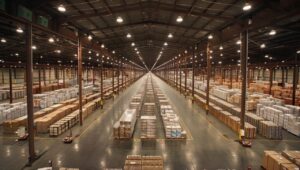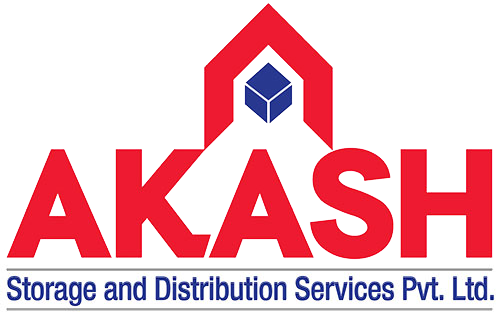Both inventory and warehousing management are responsible for monitoring and managing goods. But still, there are some differences between them.
Inventory management is responsible for forecasting, ordering, receiving, and allocating the goods.
However, the warehouse management is responsible for managing the goods inside the warehouse. It involves picking, packaging goods, and even shipping.
The blog discusses inventory and warehousing management in detail. So, let’s dive into this blog to learn its similarities and differences.
Inventory Management Vs. Warehouse Management
Inventory management and warehouse management are both distinct terms. However, they are an interconnected process that helps optimize a company’s supply chain.
Understanding the differences between these two will help to meet the customer demands effectively.

What Is Inventory?
Inventory refers to tangible assets any business holds for various purposes like production, distribution, or sales. It involves a broader range of production, starting from raw-materials, products in progress, and finished goods ready for sale.
Inventory acts as a buffer between various stages of supply chain management. Inventory management oversees the stock, tracks all the stock movement, and implements multiple advanced strategies to optimize inventory turnover by reducing holding costs.
There are various types of inventory, which are listed below.
- Raw-materials
They are basic components or materials essential for manufacturing goods or products.
- Work In Progress
They are in the mid-layer of the production process. These goods have undergone some processing but are not entirely ready for sale.
- Finished Goods
Finished goods are ready for sale.

What Is Warehouse?
The warehouse is a hub for storing goods, organizing them, and managing the inventories. It is a physical facility or has adequate space where all the company’s goods are received, sorted, and kept on shelves or racks.
Whenever a customer orders, the goods are picked and packaged correctly. They are then handed to the carrier for safe delivery to the customers at the right time.
The warehouse provides a controlled environment for proper inventory management.
Warehousing inventory management involves various processes, which are listed below.
- Receiving And Storing
It involves receiving goods, checking them, and storing them on shelves or racks inside the warehouse.
- Tracking And Monitoring
Tracking and monitoring the inventories stored inside the warehouse is quite essential. It allows us to identify the stocks that are getting low and reorder them to prevent stockout.
- Picking, Packaging And Shipping
When the order comes, the warehouse staff picks the goods and makes adequate packaging. They are then handed over to the carrier, which transports goods to be delivered to the customer.
Warehouse inventory management helps to improve order fulfillment and reduce the Company’s storage costs.
Differences Between Inventory Management And Warehouse Management
- Focus
Inventory management optimizes inventory levels to meet customers’ demands by lessening holding costs.
Warehouse management focuses on handling, storing, and managing goods inside the warehouse.
- Scope
Inventory management covers different inventories like raw-materials, work-in-progress goods, and finished goods.
Warehouse management receives and manages only finished goods. It pertains to warehouse operations like receiving, picking, packing, and shipping.
- Objective
Inventory management’s main aim is to balance stock and avoid overstocking or shortage of stocks.
Warehouse management’s main aim is to optimize space inside the warehouse to store maximum goods. Its other objectives include inventory tracking and lessening handling time.
- Key Activities
Inventory management activities include forecasting demand, analyzing inventory data, and implementing inventory control systems.
Warehousing management activities include:
- Receiving goods.
- Inspecting them thoroughly.
- Storing them in proper places.
- Managing them.
- Maintaining inventory records.
- Picking and packaging products.
- Coordinating with distribution logistics.

What Do Inventory Management And Warehouse Management Have In Common?
- Both inventory management and warehouse help to move inventories from the supplier to the customer.
- Both management systems use barcode scanners and radiofrequency identification to increase efficiency.
- Both aim to reduce costs as much as possible. Inventory management reduces costs by avoiding overstocking and stockouts. Warehouse management reduces costs by efficiently using the available space inside the warehouse.
- Both inventory management and warehouse management provide details regarding stock.
Integrating Inventory Management And Warehouse Management Systems To Grow Your Operations
Integrating inventory and warehouse management helps enhance the Company’s supply chain management.
Integrating both management systems helps streamline operations, reduce costs, and propel business growth. Let’s discuss the advantages below.
- Real Time Inventory Visibility
The integration helps to eliminate data silos and provide real-time data on stock levels both inside and outside of the warehouse. It will help to make very important decisions regarding restocking, preventing stockout, and optimizing placements of stocks inside the warehouse.
- Increase Order Fulfillment
The order fulfilment becomes accurate and on time with a clear vision of inventory.
- Reduces Cost
Mismanagement of inventories can lead to the waste of money. The integration will help to reduce stockout and overstocking. The warehouse management system helps to optimize the space inside the warehouse. It even helps to reduce labor costs and optimize picking routes.
The accurate Inventory management system forecast will help order optimal quantities of stock.
- Improves efficiency
The integration automates various human tasks, such as data entry. The staff can free up from this work and concentrate on other activities like analyzing trends and identifying areas that need improvement. It helps to increase the efficiency of the supply chain management system.
Why Is Akash Storage the Best In Inventory Management System?
Akash Storage and Distribution Services Pvt Limited has almost 23 years of experience in providing 3PL services. It has helped various businesses to optimize their inventory management process through its advanced and innovative 3PL solutions.
The storage options in Akash Warehouse are tremendous. Pallet racking is available to store palletized goods, and other options include a shelving system and bin and cartoon storage.
It even has a refrigerated storage facility where food and pharmaceuticals can be stored for a long period without hampering their quality.
Akash Storage even utilizes a warehouse management system to maximize the goods in Mumbai’s warehouse.
Simultaneously, it optimizes picking routes and automates various tasks, which leads to faster order fulfilment.
The Company has embraced automation, such as barcode scanners, which improve accuracy and reduce picking times.
Akash Storage works closely with clients to understand inventory challenges and provide effective solutions. It has embraced an inventory management system that helps track inventory levels and product locations.
Conclusion
You must understand the difference between warehouse and inventory management to have adequate supply chain operations. Both play a different but interconnected role in having smooth operations and increased customer satisfaction.
